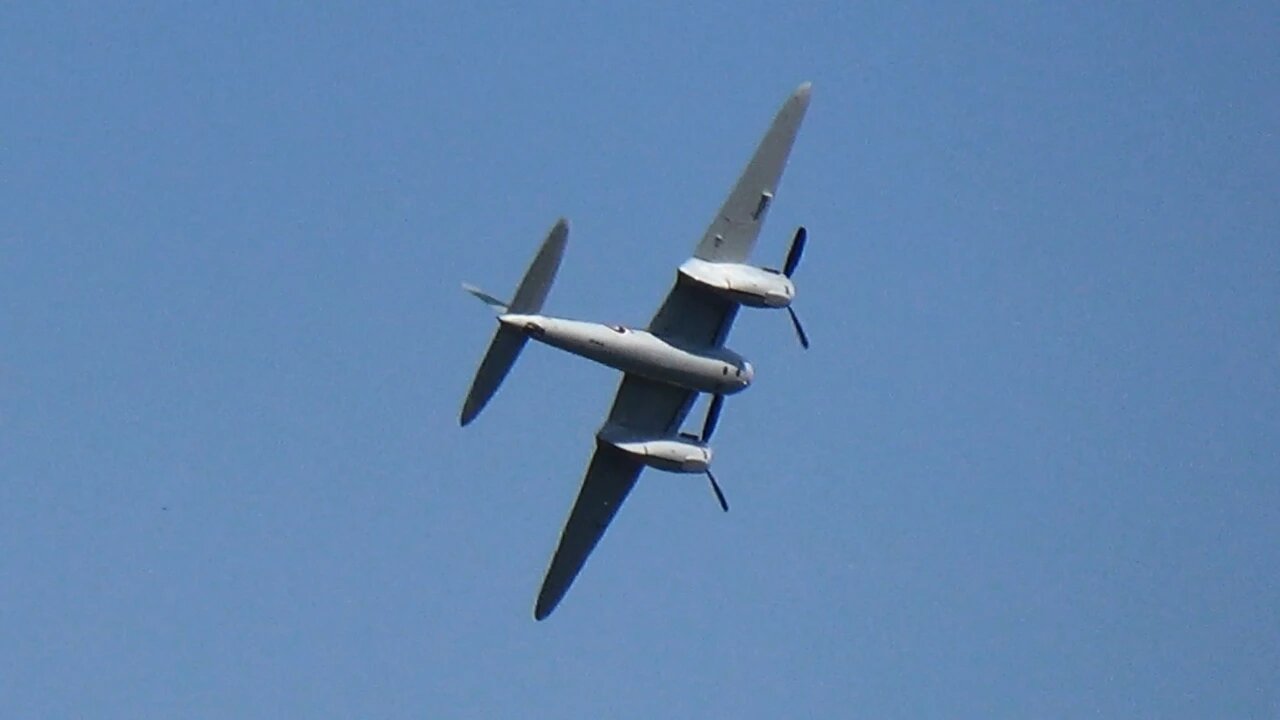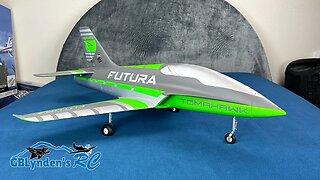Premium Only Content

2014 Abbotsford Airshow - de Havilland Mosquito WWII Warbird or "Mossie"
The de Havilland Mosquito WWII Warbird or "Mossie" as it is also known was one of the highlights of the 2014 Abbotsford International Airshow. It was a great experience to say the least and as good as this video is, it doesn't do justice for this plane flying above the 2014 Abbotsford Airshow. This one is recently restored and one of only two that fly in the world. It is still so new and shiny that is looks just like the Parkzone Mosquito Mk VI BNF Basic or the PNP version.
The Mosquito was a fast, twin-engined aircraft with shoulder-mounted wings.[57] The most-produced variant, designated the FB Mk VI (Fighter-bomber Mark 6), was powered by two Merlin Mk 23 or Mk 25 engines driving three-bladed de Havilland hydromatic propellers. The typical fixed armament for an FB Mk VI was four Browning .303 machine guns and four 20 mm Hispano cannon while the offensive load consisted of up to 2,000 pounds (910 kg) of bombs, or eight RP-3 unguided rockets.[58]
The de Havilland DH.98 Mosquito was a British multi-role combat aircraft with a two-man crew that served during and after the Second World War. It was one of few operational front-line aircraft of the era constructed almost entirely of wood and was nicknamed "The Wooden Wonder".[3] [nb 1] The Mosquito was also known affectionately as the "Mossie" to its crews.[4] Originally conceived as an unarmed fast bomber, the Mosquito was adapted to roles including low to medium-altitude daytime tactical bomber, high-altitude night bomber, pathfinder, day or night fighter, fighter-bomber, intruder, maritime strike aircraft, and fast photo-reconnaissance aircraft. It was also used by the British Overseas Airways Corporation (BOAC) as a fast transport to carry small high-value cargoes to, and from, neutral countries, through enemy-controlled airspace.[5]
When the Mosquito began production in 1941, it was one of the fastest operational aircraft in the world during World War Two.[6] Entering widespread service in 1942, the Mosquito was a high-speed, high-altitude photo-reconnaissance aircraft, continuing in this role throughout the war. From mid-1942 to mid-1943 Mosquito bombers flew high-speed, medium or low-altitude missions against factories, railways and other pinpoint targets in Germany and German-occupied Europe. From late 1943, Mosquito bombers were formed into the Light Night Strike Force and used as pathfinders for RAF Bomber Command's heavy-bomber raids. They were also used as "nuisance" bombers, often dropping Blockbuster bombs - 4,000 lb (1,812 kg) "cookies" - in high-altitude, high-speed raids that German night fighters were almost powerless to intercept.
As a night fighter, from mid-1942, the Mosquito intercepted Luftwaffe raids on the United Kingdom during WW2, notably defeating Operation Steinbock in 1944. Starting in July 1942, Mosquito night-fighter units raided Luftwaffe airfields. As part of 100 Group, it was a night fighter and intruder supporting RAF Bomber Command's heavy bombers and reduced bomber losses during 1944 and 1945.[7][nb 2] As a fighter-bomber in the Second Tactical Air Force, the Mosquito took part in "special raids", such as the attack on Amiens Prison in early 1944, and in precision attacks against Gestapo or German intelligence and security forces. Second Tactical Air Force Mosquitos supported the British Army during the 1944 Normandy Campaign. From 1943 Mosquitos with RAF Coastal Command strike squadrons attacked Kriegsmarine U-boats (particularly in the 1943 Bay of Biscay, where significant numbers were sunk or damaged) and intercepting transport ship concentrations.
The Mosquito flew with the Royal Air Force (RAF) and other air forces in the European theatre, and the Mediterranean and Italian theatres. The Mosquito was also used by the RAF in the South East Asian theatre, and by the Royal Australian Air Force (RAAF) based in the Halmaheras and Borneo during the Pacific War.
Long after World War II, the Mossie is celebrated and admired in the sky with its rumbling Merlin engines powering through the sky.
-
 5:51
5:51
GBLynden's RC
1 year agoDetailed Unboxing | FMS Futura 64mm EDF Sport Jet
266 -
 LIVE
LIVE
Chrissie Mayr
1 hour agoChrissie Mayr Reactions to Charlie Kirk, Liberal Celebrations, and More
179 watching -
 LIVE
LIVE
AlaskanBallistics
1 hour agoRemembering Charlie Kirk
139 watching -
 1:23:27
1:23:27
Glenn Greenwald
4 hours agoNetanyahu’s Crude Exploitation of Charlie Kirk’s Death to Get the American Right Back into Line; Plus: Q&A With Glenn on Charlie Kirk's Assassination, Online Civil Discourse, and More | SYSTEM UPDATE #514
155K91 -
 4:10:25
4:10:25
Nerdrotic
7 hours ago $13.71 earnedCulture Is VITAL! Streaming BUST, Warner Bros. Buyout | Friday Night Tights 371 with Vara Dark
183K19 -
 1:02:32
1:02:32
BonginoReport
5 hours agoCharlie Kirk’s Assassin In Custody, Details Emerge - Nightly Scroll w/ Hayley Caronia (Ep.133)
164K165 -
 LIVE
LIVE
LFA TV
22 hours agoKILLER CAUGHT LIVE PRESSER! - FRIDAY 9/12/25
803 watching -
 26:08
26:08
The Mel K Show
5 hours agoMel K & Ken Silva | Updates: Trump Attempted Assassination Trial, North Carolina Investigation, & Silver Bump! | 9-12-25
34.4K3 -
 1:24:33
1:24:33
Kim Iversen
5 hours agoBlaming Nick Fuentes For Charlie Kirk's Death In 3...2...1...
94.2K263 -
 1:08:42
1:08:42
Roseanne Barr
9 hours agoFor Charlie…| The Roseanne Barr Podcast #115
202K172